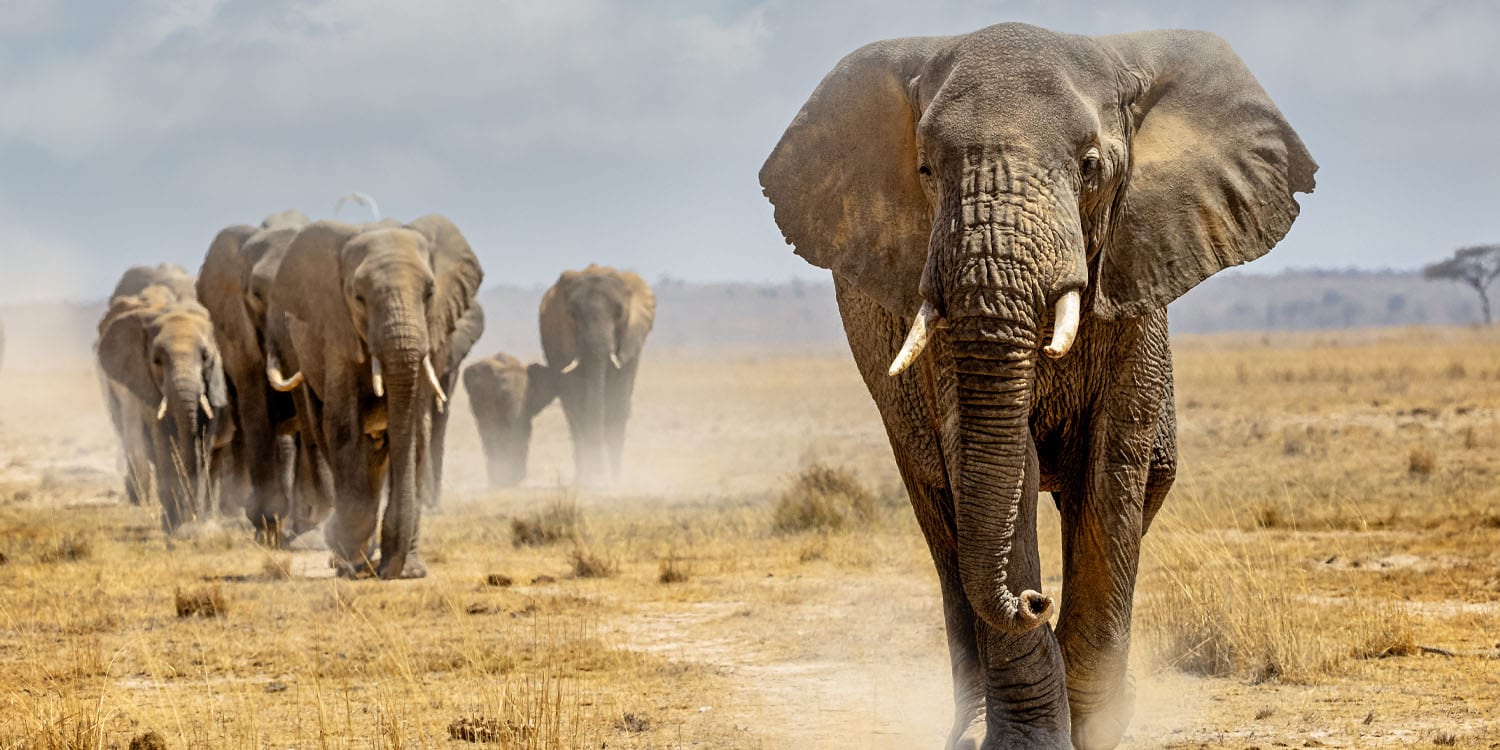A recent study published in Nature Ecology & Evolution has uncovered that wild African elephants communicate with individually specific calls, akin to human names. This groundbreaking discovery suggests that elephants use unique sound patterns to refer to each other, without imitating the vocalizations of the addressed individual. Researchers developed a statistical model that could identify the intended recipient of an elephant’s call with 20% accuracy, significantly better than random chance.
One of the hallmarks of human language is the use of names. Humans use specific sets of sounds to refer to specific objects or individuals. When a human baby is born, its caregivers decide on a set of sounds or letters to refer to the newborn throughout its lifetime. This is called a name.
An important feature of human names is that they are arbitrary in structure. If a newborn baby is named Mary, John, or any other name, that specific set of sounds or letters forming the name has no connection with any of the baby’s features. Others cannot infer a person’s name just by observing them (unless they observe the person saying their own name) because the name has nothing to do with the person’s characteristics. The only way we can learn another person’s name is if someone tells us or if we read it somewhere. Similarly, if a person changes their name, others can use the new name without any issues.
But it has been unclear if there are any species aside from humans that can use names like this. Previous studies found that species like bottlenose dolphins and some parrots refer to other members of their species by imitating the sounds that particular individual makes. However, this severely limits the possible complexity of the communication.
Study author Michael A. Pardo and his colleagues analyzed contact and greeting rumbles from female-offspring groups of wild African savannah elephants to determine whether they might contain vocal labels similar to the names humans use for each other. They recorded a set of 527 calls of elephants from the greater Samburu ecosystem in northern Kenya and 98 calls from Amboseli National Park in southern Kenya, identifying both the elephant sending the call (the sender) and the elephant it was addressed to (the receiver, the elephant who responded to the call).
These calls came from 114 different elephants as the callers and 119 different elephants as receivers. For 597 of these calls, both the caller and the receiver belonged to the same family group.
“The most common call type produced by elephants is the rumble, a harmonically rich, low-frequency sound that is individually distinct, distinguishable, and produced across most behavioral contexts. Contact rumbles are long-distance calls produced when the caller is visually separated from one or more social affiliates and attempting to reinitiate contact. Greeting rumbles are close-distance calls produced when one individual approaches another after a period of separation,” the study authors explain.
The authors conducted statistical analyses of these calls and determined that they are specific to individual receivers. In other words, it was possible to determine with some accuracy from the sounds contained in the call who the receiver was. This indicates that elephants use specific sound combinations as vocal labels for specific elephants. They address other elephants by name.
The authors created a statistical model that predicted the identity of the elephant a call was directed to with 20% accuracy. While far from perfect, this accuracy is much better than random guessing, confirming that the calls of these elephants contain combinations of sounds that refer to specific other elephants. Further statistical analysis indicated that the calls indeed refer to individual elephants and do not depend on the relatedness or age of the elephants in question.
In humans, different people address the same individual by the same name. The study authors wanted to test whether this is the case with elephants as well, but the evidence was inconclusive. The statistical machine learning model was not able to predict better than chance who a specific elephant was addressing if the model was not trained on calls of the sender elephant. Thus, it remains unknown whether elephants use the same name for the same individual or if different elephants use different names for the same elephant (kind of like different people addressing us using different nicknames).
Finally, the authors played recorded calls to 17 wild elephants and found that they reacted much more strongly to playbacks of calls addressed to them than to calls addressed to other elephants.
“To our knowledge, this study presents the first evidence for vocal addressing of conspecifics [other members of the same species] without imitation of the receiver’s calls in nonhuman animals. Very few species are known to address conspecifics with vocal labels of any kind. Where evidence for vocal labels has been found, they are either clearly imitative or of unknown structure. Our data suggest that elephants label conspecifics without relying on imitation of the receiver’s calls, a phenomenon previously known to occur only in human language.”, study authors concluded.
The study makes an important contribution to the scientific understanding of social interactions in elephants. However, it should be noted that the ability of the statistical model developed in the study to identify receivers of calls was far from perfect, likely indicating that individual names (vocal labels) are not used in every call and that more research is needed before elephant calls are fully understood.
The paper, “African elephants address one another with individually specific name-like calls,” was authored by Michael A. Pardo, Kurt Fristrup, David S. Lolchuragi, Joyce H. Poole, Petter Granli, Cynthia Moss, Iain Douglas-Hamilton, and George Wittemyer.




